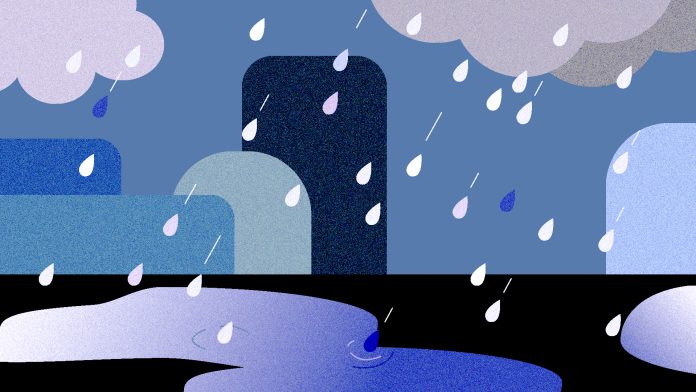Melanie Martinez
Science and Technology Co-Editor
Heavy rain and flooded streets marked the beginning of the 2023 winter quarter at UC Santa Barbara (UCSB). Throughout the first week of January, students traveled back to the Santa Barbara area with the intention of starting classes on Jan. 9. However, unprecedented heavy rainfall and its aftermath disrupted academic plans for the start of the quarter. For many students, the storm delayed their return to campus or left them unable to purchase necessities in local stores.
Due to a delayed response from the university, many students had to endure the heavy rain and flooding in order to attend early classes. At 8 p.m. on Monday night, after a day of classes was over, Chancellor Yang sent out an email to instructors and students announcing that classes would be canceled due to the extreme rain and weather conditions for the next day.
In the days prior to the start of the quarter, forecasts told of a brutal series of storms that were to hit the majority of the California coastline. These storms were the result of two significant weather events: an atmospheric river and a bomb cyclone.
An atmospheric river is a long and narrow region in the atmosphere — like a river in the sky — while a bomb cyclone is an increasingly intensifying storm consisting of strong winds and heavy precipitation.
These two weather events occurring simultaneously resulted in infrastructure damage across the state. This storm comes right after a three-year-long drought in California and, thus, the state wasn’t prepared for a storm of this level. In the future, these events can occur more frequently after long periods of drought due to the ever-increasing threat of climate change.
This weather event caused some local areas, particularly Isla Vista (I.V.), to be on high alert due to their proximity to the ocean. The oceanside buildings on Del Playa Drive were of special concern, as they sit precariously close to 40-foot cliff sides. Many of these buildings are already impacted by erosion, which has been steadily chipping away at the ocean walls. Due to this high-risk many residents on oceanside Del Playa were advised to avoid stepping out on their decks/patio.
These issues heavily affected the student population that had just arrived back in I.V. or were still traveling back into town. Travel hubs like Santa Barbara Airport and Goleta and Santa Barbara Amtrak stations delayed the arrival of many students. Some flights to Santa Barbara were redirected to Los Angeles International Airport, stranding students hours away from campus. For Amtrak riders, every train coming from San Luis Obispo and Los Angeles was canceled, meaning students could only wait until the trains were running again.
The consequences of the storm remained even after the rain had subsided. Once roads were safer to travel, many Santa Barbara residents and UCSB students headed to local stores to restock on groceries and other essentials that they were unable to access during the storm. However, even during the early hours of the day when the stores opened, food was sparse as the rain prevented trucks from making deliveries. Stores have since been recovering from those few days of empty shelves.
After a rocky start to the quarter, the rest of the week continued as usual, with students being able to return to class. However, this isn’t the first academic quarter to be disrupted by a natural event. Winter quarter is often marked by tumultuous weather, as it coincides with the only time of year that Santa Barbara sees significant storm activity. Even so, the UCSB community remains resilient and students continue with their studies. However, the future is uncertain on whether we will ever be prepared for major weather events and local coastal erosion.











